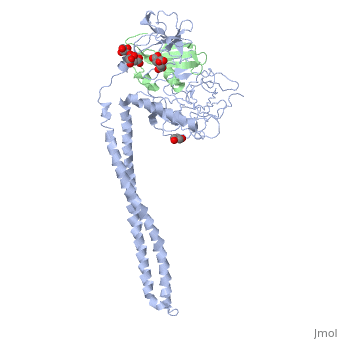Structural highlights
Function
[CEA3_ECOLX] Inactivates ribosomes by hydrolyzing 16S RNA in 30S ribosomes at a specific site. Colicins are polypeptide toxins produced by and active against E.coli and closely related bacteria. [IMM3_ECOLX] This protein inhibits the 16S RNA hydrolyzing activity of colicin E3 by binding with high affinity to the C-terminal catalytic domain of E3. This protein is able to protect a cell, which harbors the plasmid ColE3 against colicin E3.
Evolutionary Conservation
Check, as determined by ConSurfDB. You may read the explanation of the method and the full data available from ConSurf.
Publication Abstract from PubMed
Colicins kill E. coli by a process that involves binding to a surface receptor, entering the cell, and, finally, intoxicating it. The lethal action of colicin E3 is a specific cleavage in the ribosomal decoding A site. The crystal structure of colicin E3, reported here in a binary complex with its immunity protein (IP), reveals a Y-shaped molecule with the receptor binding domain forming a 100 A long stalk and the two globular heads of the translocation domain (T) and the catalytic domain (C) comprising the two arms. Active site residues are D510, H513, E517, and R545. IP is buried between T and C. Rather than blocking the active site, IP prevents access of the active site to the ribosome.
Crystal structure of colicin E3: implications for cell entry and ribosome inactivation.,Soelaiman S, Jakes K, Wu N, Li C, Shoham M Mol Cell. 2001 Nov;8(5):1053-62. PMID:11741540[1]
From MEDLINE®/PubMed®, a database of the U.S. National Library of Medicine.
See Also
References
- ↑ Soelaiman S, Jakes K, Wu N, Li C, Shoham M. Crystal structure of colicin E3: implications for cell entry and ribosome inactivation. Mol Cell. 2001 Nov;8(5):1053-62. PMID:11741540


